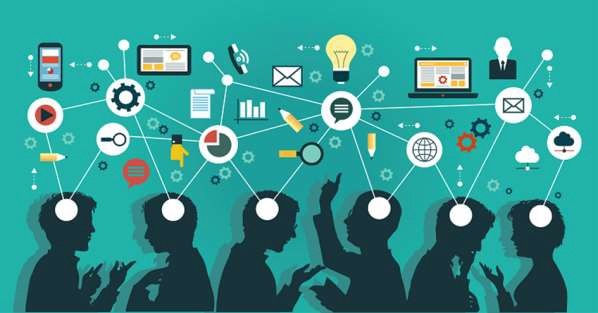communication technology in 2025.
Communication technology is known as the various tools, systems, and devices used to transmit, receive, and process information. communication technology like relephones, radios, and televisions to the internet, smartphones, and emerging technologies like 5G, satellite internet, and AI-driven platforms.
the evolution and impact of communication technology in the digital age and in todays hyper-connected world, communication technology forms the backbone of how we interact, share, and conduct business. from ancient smoke signals to real-time video conferencing, the journey of communication tools has been nothing short of revolutionary.
History of communication technology
1. Early Forms of Communication
Human communication began with verbal language, cave paintings, and eventually written scripts. Over centuries, civilizations developed postal systems, signaling methods, and printing presses to share information across distances.
2. The Industrial Revolution: The invention of the telegraph in the 19th century marked a pivotal moment, allowing long-distance communication through electrical signals. This was quickly followed by the telephone and radio, which further revolutionized real-time communication.
3. The Digital Revolution
The late 20th century brought the internet, mobile phones, and personal computers. These innovations transformed communication into a fast, global, and multimedia experience.

4. The Modern Era:
Today, we use instant messaging, social media, cloud computing, and video conferencing to stay connected. Technologies like 5G, artificial intelligence, and the Internet of Things (IoT) are now shaping the next frontier of communication.
Importance in Various Fields of communication technology in 2025.
Communication technology plays a vital role in nearly every industry and aspect of daily life. Here’s how it impacts different fields:
1. Business and Commerce
Modern businesses rely heavily on communication technology to operate efficiently:
Remote Work: Platforms like Zoom, Microsoft Teams, and Slack allow global teams to collaborate in real time.
Customer Engagement: Businesses use social media, chatbots, and email marketing to connect with customers instantly.
E-commerce: Online platforms use communication tech to manage customer inquiries, order tracking, and feedback loops.
2. Education
The education sector has been transformed by digital communication tools:
Online Learning: Tools like Google Classroom, Zoom, and LMS platforms enable remote education.
Global Access: Students can attend courses from institutions worldwide.
Collaboration: Teachers and students can engage in forums, discussion boards, and real-time messaging for enhanced learning.
3. Healthcare
Communication technology significantly enhances healthcare delivery:
Telemedicine: Doctors can consult with patients remotely, reducing the need for physical visits.
Medical Alerts: Wearable devices can transmit real-time health data to medical professionals.
Information Sharing: Electronic Health Records (EHRs) and secure messaging allow faster, more accurate communication between providers.
4. Government and Public Services
Governments utilize communication tech for transparency and citizen engagement:
E-Governance: Citizens can access services, pay taxes, and file complaints online.
Emergency Alerts: Governments send real-time alerts for natural disasters, health crises, and public safety issues.
Public Communication: Social media and official websites keep the public informed and involved in governance.
5. Media and Entertainment
The way content is created, distributed, and consumed has changed dramatically:
Streaming Services: Platforms like Netflix and YouTube deliver content instantly worldwide.
Social Media: Artists, journalists, and influencers communicate directly with their audiences.
Live Broadcasting: Real-time news, sports, and events are streamed globally via advanced communication networks.
6. Science and Research
Communication technology accelerates global research collaboration:
Data Sharing: Scientists can share research findings instantly across borders.
Virtual Conferences: International conferences and webinars foster knowledge exchange without travel.
Remote Experiments: Technologies like IoT and cloud computing allow remote access to labs and experiments.
7. Agriculture
Even agriculture is benefiting from modern communication tools:
Farmer Education: Mobile apps and SMS services provide farmers with weather updates, market prices, and best practices.
Supply Chain Coordination: Communication tools help streamline the distribution of produce from farms to markets.
AgriTech Solutions: IoT devices and sensors communicate crop health data in real time.
Challenges and Considerations of communication technology in 2025.
While communication technology offers immense advantages, it also brings challenges:
Digital Divide: Not everyone has equal access to modern communication tools, particularly in rural or underdeveloped regions.
Privacy and Security: As communication becomes more digital, the risk of data breaches and cyberattacks grows.
Information Overload: The constant stream of messages and notifications can lead to stress and reduced focus.
The Future of Communication
The future of communication technology is heading toward immersive experiences. Virtual reality (VR), augmented reality (AR), and AI-driven chatbots are redefining how we interact with digital content and with each other. Real-time language translation and holographic communication are no longer the stuff of science fiction.
Communication technology continues to evolve at lightning speed, shaping societies, economies, and relationships in profound ways. staying informed about these advancements helps individuals and oragtanizations harness their full potential while navigating the risks and ethical questions that come with them,
